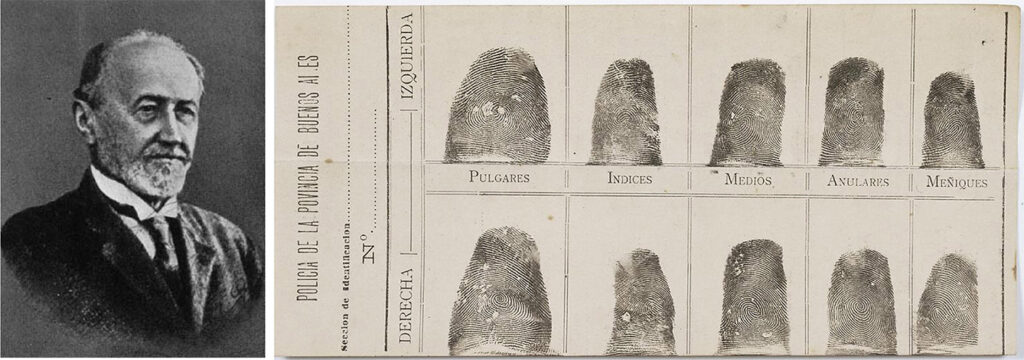Although marking an object or a document with a handprint, footprint, or fingerprint is not a new concept, fingerprints, in particular, have specific qualities that connect them directly to the curious and thrilling criminal stories we all like to hear. And it was such a thrilling story that led Juan Vučetić, a Croatian-born police officer living in Argentina, to use fingerprints for the first time ever to catch a killer in 1891.
Juan Vučetić, the pioneer of dactyloscopy
The 1890s brought in a gold rush of statistics, and many scientists had begun collecting different data on large groups of people, looking for similarities between their traits. This all was under the influence of Sir Francis Galton, a proponent of social Darwinism. He believed that societies develop as organisms do, with the survival of the fittest and the remnants of abandoned traits, useless or even harmful, still residing within a body.
As Galton’s ideas gained in popularity, some tools of anthropometry, in other words, the scientific study of the measurements and proportions of the human body, were introduced to criminology. Most of them are now known as the Bertillon system after Alphonse Bertillon. He discovered that measurements of certain physical traits of the body could serve as physical signatures, immune to change in time or the course of diseases.

Juan Vučetić was 24 years old when he immigrated to Argentina and took a job in the La Plata Police Office of Identification and Statistics. Strongly influenced and inspired by Galton’s and Bertillon’s work, Vučetić came up with the idea of collecting fingerprints as a means of identification.
Previous efforts in using handprints as signatures did not account for their uniqueness; instead, they focused on the gesture and symbolism of leaving one’s physical mark on a document. This is why, for example, British colonial official William James Hershel had illiterate Bengali sign their contracts with handprints.
Fingerprints: a novel approach to identification
Vučetić began collecting fingerprints from people he arrested and adapted anthropometric methods to analyze them. He called his research dactyloscopy, and it didn’t take long for the new technique to prove useful. In June 1892, a man named Pedro Velázquez was accused of killing two of his neighbor’s children as well as attempting to kill their mother, Francisca Rojas.
However, Velázquez had a rock-solid alibi, so the investigation continued. The breakthrough came when the detective found a bloody fingerprint on a bedroom door. Trained by Vučetić, he decided to compare it with the pattern of Rojas’ fingers. It was a match, and the mother ultimately confessed to the murder of her children.
With such proven success, Argentina soon switched to using fingerprint analysis to solve crimes, breaking with other means of anthropometry. In 1900, it became the first country in the world to introduce a personal biometric ID with a fingerprint on it, and Vučetić’s method quickly spread across the globe.
Today there is an Argentinian police academy and a Croatian Forensic Center named after him, as well as a monument in his native Hvar. But, perhaps, the most fitting commemoration is the worldwide adoption of the fingerprint method, which has aided in solving innumerable crimes around the globe over the past century.







